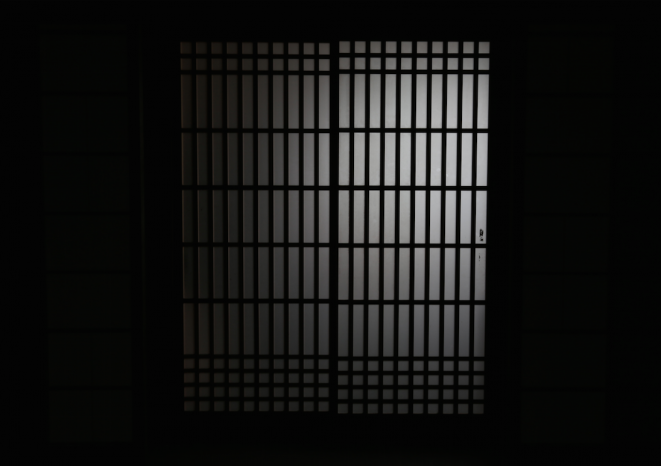Laura Hindmarsh & Dylan Sheridan
Kyoto Arts Center Residency
This is an Asialink Arts Residency Project supported by Arts Tasmania
a visual inventory for Empty Orchestra
get in contact
laurahindmarsh.com
a previous collaboration using footage from Teinosuke Kinugasa's
1926 film - A Page of Madness 狂った一頁
week 1 in the tatami room
dylansheridan.com
week 2 in the sound studio
week 3
Noh and folklore
screens, power lines & patches
shoji screens & windows
evolution of the Nurikabe
Edo period folklore
yōkai
Mizuki Shigeru
invisibile wall
the Whomps
Mario 64
Nurikabe puzzle
depiction of invisible phenomenon
They say yokai disappeared as electric lights came in. Monsters prospered in the pre-electricity days, when people used andon and oil lamps. Electricity was too bright for yokai to survive - Shigeru Mizuki
week 4
invisible walls / screens
Invisible Cinema
Peter Kubelka
Theaters
Hiroshi Sugimoto
Standard Gauge
Morgan Fisher
The Invisible Man
H.G Wells
Jean Cocteau
Orphée
invisible walls
Shepard tone
endless scale
Williams process
Charlie Chaplin

overlapping interests
- magical realism
- atonality / structured pattern that are generative and expansive.
- working with that which is indeterminate
- structure - gaps/ sequences/ phasing/ echoing/ layers
- move away from traditional viewing experiences
Japanese influences
- structural timing jo ha kyu
- discipline
- ma
- kage no bigaku - (aesthetics of shadow)
- darkness (horror, mystery and the uncanny)
Tasmanian gothic
- Not rooted in medieval imagery or gothic architecture rather in natural landscape and history
why Kyoto
- birth place of Japanese cinema
- traditional theatre
- experimental crossover Parasophia, Kyoto Experiment and the Kyoto film festival
things to work on
- systems to combine sound and light (video/film?)
- performance
- how spatial experience / emotion can change due to light and movement
- convey multiple senses of time - layered sound / layered visuals
- aesthetic sensibilities connected to place - simultaneity of light and darkness
other things
- Edo period’s influence on folklore, theatre, aesthetics and literature.
- Inseparable connection with nature, horror and darkness
- Compare to Tasmanian gothic identity - based on wilderness / dark history
- Expectation and work ethic in japan
- performativity of production/ presentation
- behind the scenes/facade - private and public /
? Dylans role - creating the structure/ pattern/ sequence ?
? Laura’s role - reflecting on the structure / opening up the process ?

Noh stage as cosmos ‘On a bounded stage that represents the cosmos, a make or made-up actor buried beneath layers of costume utilises subtle movements framed by light and shadow to produce startling potent gestures framed within dynamic stillness’ - Jonah Salz
‘Although Noh is learned in a rote manner, meaning is not thereby absent. Meaning is gradually acquired and internalised through the physical process of repeatedly doing the movement and voice, a process that functions beyond verbal or intellectual explanation.’ - James Braddon
None is traveling
here along this way but I
this autumn evening
Matsuo Bashō
our neighbor
week 5
the aesthetics strangeness, uselessness, unfixed identity
persona of unworldly recluse, a carefree wanderer
(forgive L's first attempt at notation)
Let us consider a being that can only move in a straight line. This world of the straight line is a one-dimensional space and can be easily measured.
Lets us consider a being that can move in any direction on a flat plane. This world of the flat plane is a two-dimensional world and can be measured by two straight lines that intersect at a point.
The world in which human beings move is a three dimensional world and can be measured by three straight lines that intersect at a point.
Now if we limit the length of the straight line the one-dimensional being will be trapped.
If we draw a circle around the two-dimensional being, they cannot escape.
If human being are locked in a room we are also trapped.
Let us consider a being that can freely move in and out of an enclosed room -this is a being who lives in the fourth dimension. We cannot actually see a being that has this four-dimensional characteristic, but we can imagine its existence.
This is the ontology of Noh.